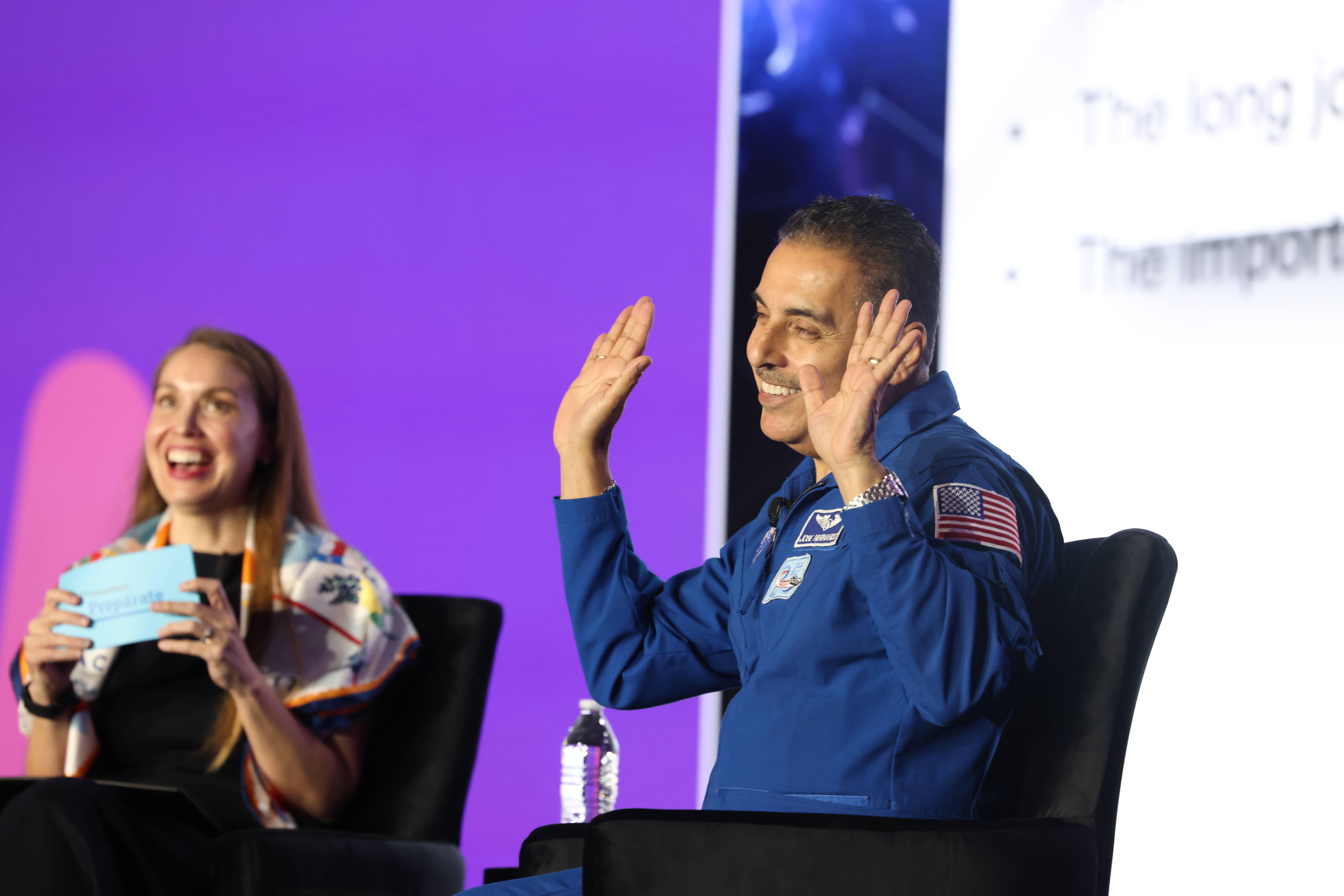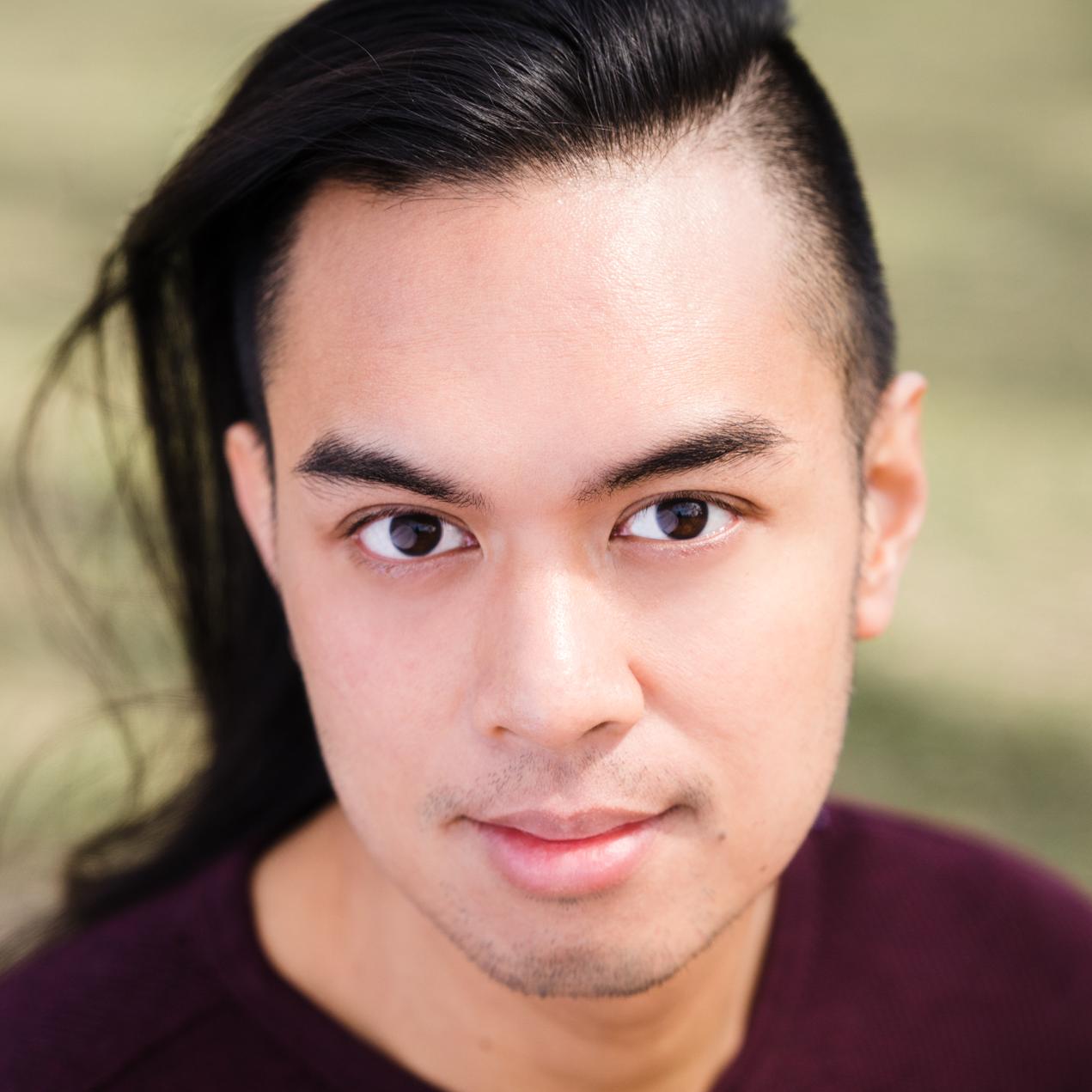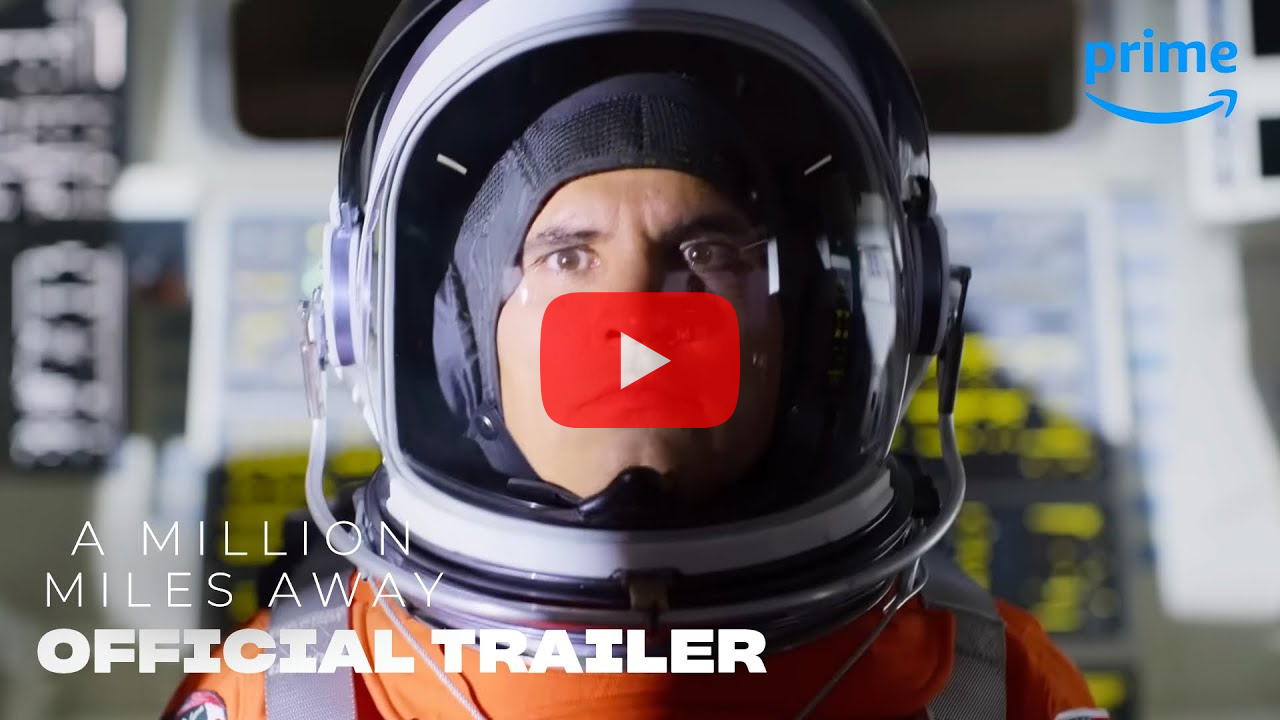Prepárate 2024
Reaching for the Stars with Latino Astronaut José Hernández
Former NASA astronaut José Hernández delves into resilience, education, visibility, and the crucial role of Latino representation in STEM.

When José Hernández heard that Franklin Chang-Díaz—a Latin American immigrant like him—was selected for space travel, it signaled the thought:
That could be me.
Donning his royal blue NASA jumpsuit on the plenary stage at the 2024 Prepárate™ Conference, he’ll tell us education, perseverance, and the encouragement of family enabled him to go from working the earth to seeing the world from above.
Sitting down with Michelle Cruz Arnold, vice president of Government Relations and Advocacy at College Board, Hernández describes his transient childhood working as a migrant farmer with his parents, sister, and two brothers. Following the crop seasons, they would spend three months in Mexico and nine months in different parts of California.
“I see my first kindergarten teacher in Southern California for two months. Just as I know her name and the names of my friends, we go to Central California,” he continues, “I’m up to my second kindergarten teacher and second set of friends—and then we go to Northern California, spend five months there with my third kindergarten teacher. Then we go to Mexico ... I load up on three months' worth of homework from my teacher.”
He credits his parents for instilling the value of learning. Despite only having a third-grade education, his mother and father would make sure he and his siblings sat down to study every day after school.
Math was his refuge. The constant moving in his younger years meant he would not be proficient in English until his preteens. But he learned that math and science were his forte. As he puts it:
Two plus two is four in any language. ... Don't be afraid of numbers. Especially the young ladies who tend to shy away from [math and science]. We need more women in STEM than ever.
José Hernández, Former Astronaut, NASA; Founder and CEO, Tierra Luna Engineering, LLC
On one December day, a 10-year-old Hernández tells his father of his dream to become an astronaut. Though surprised, his father validates the dream, saying:
I think you can do it.
Looking out into the crowd, Hernández shares:
When someone you respect tells you you can do things, you feel empowered. So, remember that as an educator, as an administrator. You have the ability to empower kids into believing they can do the remarkable.
José Hernández, Former Astronaut, NASA; Founder and CEO, Tierra Luna Engineering, LLC
Turning astronaut dreams into reality is not easy. So his father prepared him for the challenge with a five-ingredient recipe for success: (1) Define your purpose in life—what you want to do. (2) Recognize how far you are from your goal. (3) Draw a map from where you’re at to where you want to go. You must know how to get to your goal. (4) Prepare yourself for the challenge you picked. For Hernández, that preparation involved working toward a college education. (5) Develop a strong work ethic, giving more than what people ask for.
Hernández adds a sixth ingredient: Perseverance. “NASA rejected me not once, not twice, not even 3 or 4 times—11 rejections. It wasn't until the 12th time that I got selected.”
At the time of his sixth rejection from NASA, Hernández was an engineer working at Lawrence Livermore National Laboratory in Livermore, California. On the verge of giving up, his wife asks him a game-changing question. Those people who got into the program—what do they have that you don’t?
After finding out the other astronauts were pilots, he became a pilot. When he saw they had scuba diving experience, he became a master scuba diver. And when an opportunity arose at his lab to work on a nuclear project in Siberia, he raised his hand. It would become a great differentiator in getting him closer to his astronaut goal.
“Don’t be afraid to invest in yourself,” Hernández proclaims, noting the extra effort he needed to put in to set him back on the course to NASA.
When Cruz Arnold asks how resources like Upward Bound and the TRIO Programs helped him, Hernández notes:
“When we’re first generation, our parents don’t know the ins and outs about going to college. They don’t know the ins and outs about financial aid. And it’s these great programs that not only keep us kids focused and college-bound, but they also serve as tools that say, ‘Hey, you gotta fill out this FAFSA®.’ And they’ll explain it to you. ‘Hey, you gotta apply to ... upper-, middle-, and lower-tier colleges so you have a chance of going to one of them.’ ... So they gave you all the tools to ensure that you will not be stuck.”
Hernández ends the conversation with Cruz Arnold discussing his second-grade teacher, Ms. Young.
When he asks Ms. Young to assign three months of homework before he leaves for Mexico, she goes to see his parents.
After an exchange with his father, Ms. Young asks what happens to the growth of a tree if it’s replanted every three months. Knowing the answer, Hernández’s father replies that the tree will not die, but its growth will be stunted.
It was the last year they migrated back and forth.
Hernández recounts, “[Ms. Young] not only changed my trajectory. She changed the trajectory of the whole family, of a whole generation, by taking an hour out of her time to do that. ... I always applaud the efforts of educators because I really think you guys are the real heroes.”
Played by Michael Peña and directed by Alejandra Márquez Abella, the 2023 film A Million Miles Away is inspired by the life of José Hernández. The screenplay is based on Hernández's autobiography Reaching for the Stars.

